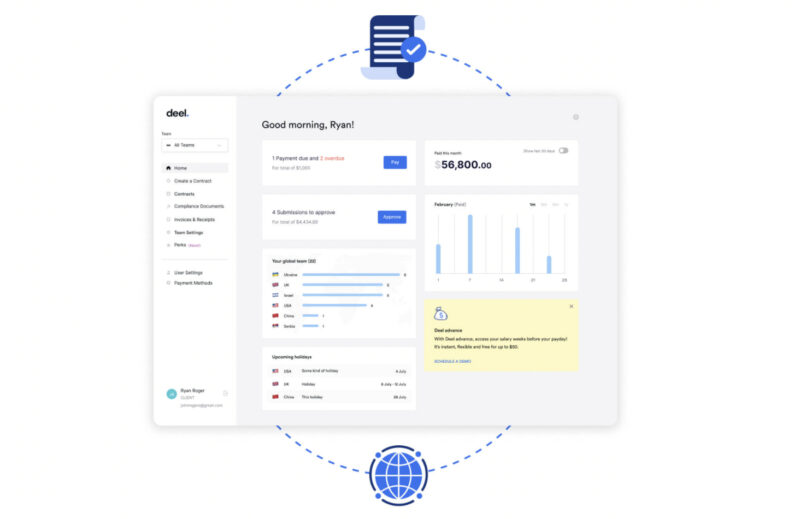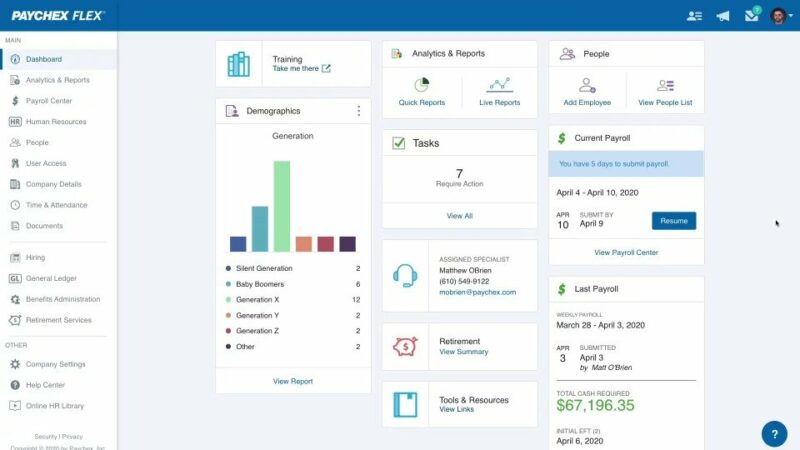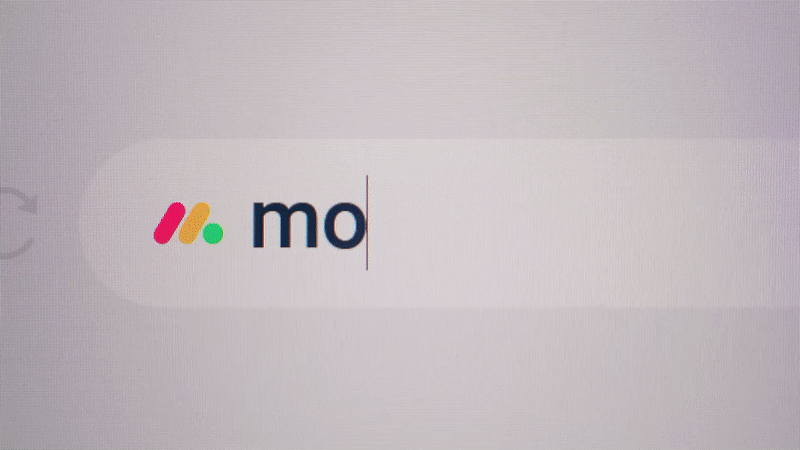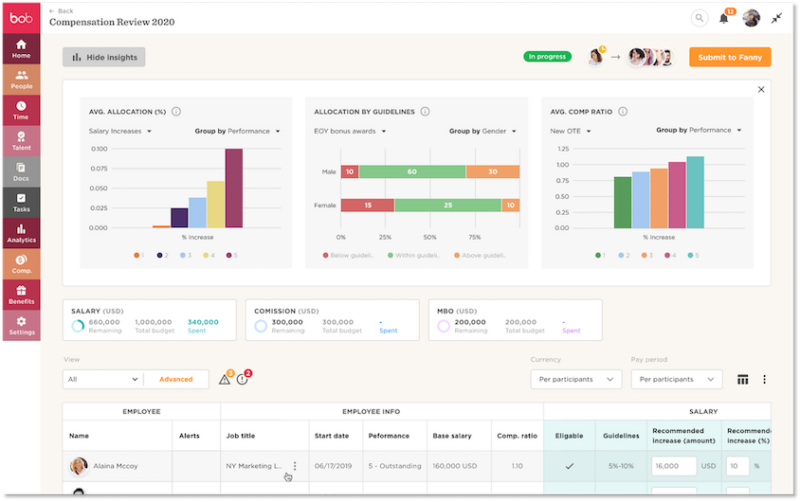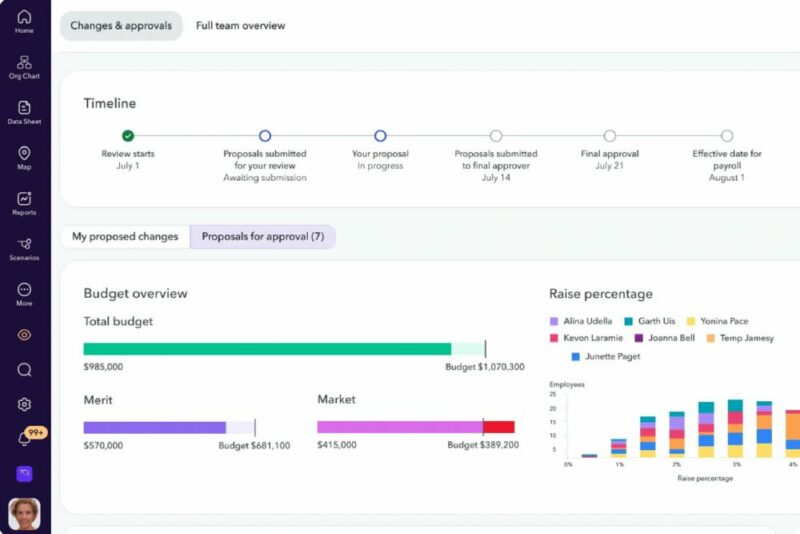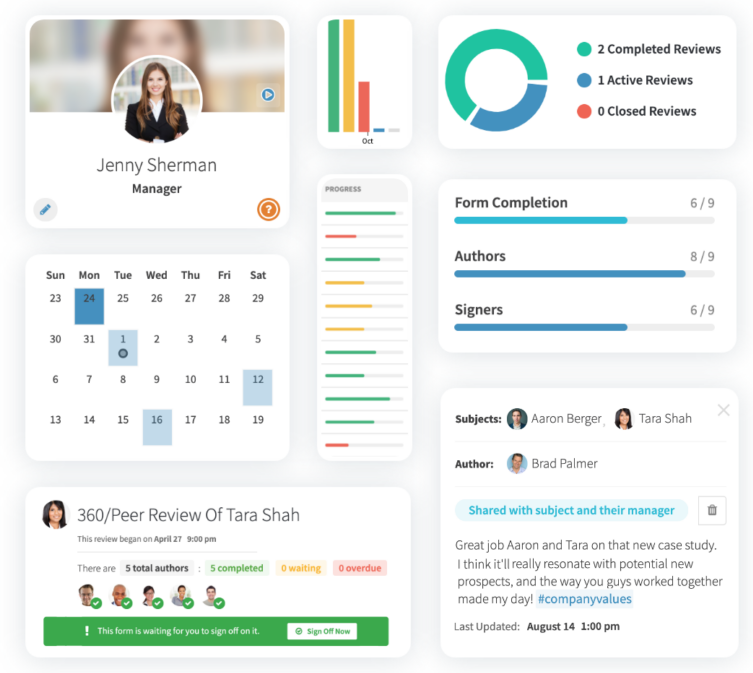HR analytics software is a cornerstone for strategic decision-making in human resources.
The power of HR analytics lies in its ability to transform vast amounts of employee data into actionable insights, propelling businesses toward efficiency and growth.
A recent study revealed that organizations utilizing HR analytics software have significantly improved productivity and employee retention rates.
This underscores the vital role HR software plays in understanding workforce dynamics and informing HR strategies.
 As the demand for sophisticated HR tools rises, selecting the right software is crucial for businesses aiming to harness the full potential of their human capital.
As the demand for sophisticated HR tools rises, selecting the right software is crucial for businesses aiming to harness the full potential of their human capital.
Let’s look closer at the top HR analytics software solutions that are revolutionizing how organizations approach their most valuable asset—their people. Discover how these tools can empower your HR decisions and drive organizational success.
What is HR analytics software?
HR analytics software is a sophisticated tool designed to analyze and interpret data.
Instead of tedious spreadsheets and inputting data manually, these programs utilize various algorithms and data processing techniques to provide HR managers insights into workforce management, employee performance, and recruitment strategies.

It acts as a decision-support system through graphs and charts, enabling HR professionals to make data-driven choices and predictions about their workforce.
Transform raw data into digestible HR templates and actionable intelligence with HR analytics software. These platforms have become an indispensable tool in modern human resource management.
Best HR Analytics Software
Explore our curated list of the ten best HR analytics software, each offering unique tools and insights to transform your human resource management.
These platforms are meticulously selected for their advanced analytics features, HR tips and guidance, user-friendly interfaces, and their power to drive strategic decision-making in HR processes.
1. Deel
As a renowned HRIS system, Deel focuses on providing global payroll benchmarking, compliance, recruitment, and HR outsourcing that caters to companies with an international headcount.
🏅Why this is an effective HR analytics software: Deel perfectly fits organizations managing global employees, offering streamlined payroll and compliance with localized support.
⭐️ Standout Features:
- Global payroll and compliance
- Contract and human capital management
- Localized HR support
2. Paychex
Paychex provides integrated payroll and HR solutions, complemented by advanced analytics tools for effective resource management.
🏅Why this is an effective HR analytics software: It’s ideal for businesses seeking robust payroll processing capabilities alongside insightful HR analytics for strategic decision-making.
⭐️ Standout Features:
- Payroll processing
- Tax services
- HR consulting
3. BambooHR
BambooHR is tailored for small businesses to enterprise-level HR software needs, offering a comprehensive suite of HR tools with a focus on user-friendliness and performance management.
🏅Why this is an effective HR analytics software: BambooHR is a great all-in-one data source for agile teams with multiple HR responsibilities. It’s particularly effective for SMBs looking for an accessible way to leverage people data to improve the employee experience and streamline processes.
⭐️ Standout Features:
- Performance tracking
- Employee self-service
- Advanced reporting
4. monday.com
monday.com is known for its customizable project management tools extending into HR analytics, offering adaptable templates and workflow automation.
🏅Why this is an effective HR analytics software: monday.com can be a cloud-based HR software that suits businesses looking for flexibility in HR data visualization and the ability to tailor analytics to specific needs.
⭐️ Standout Features:
- Customizable workflows
- Time tracking
- Employee performance analytics
5. Bob
Bob is a modern HR platform supporting the entire employee lifecycle, combining robust analytics with user-friendly features.
🏅Why this is an effective HR analytics software: Ideal for companies aiming for a culture-first approach, Bob provides access to HR consultants and insights into employee engagement and performance, facilitating a positive workplace environment.
⭐️ Standout Features:
- Culture and engagement analytics
- Time off management
- Performance review tools
6. Rippling
Rippling offers an integrated HR and IT management platform, automating many aspects of people management, from payroll to app provisioning.
🏅Why this is an effective HR analytics software: Rippling is a versatile choice for companies that want a unified solution to simplify HR and IT tasks by streamlining processes.
⭐️ Standout Features:
- Automated payroll and benefits
- HR app management
- Employee data system
7. Crunchr
Crunchr specializes in people analytics and workforce planning, offering tools for data-driven decision-making in HR.
🏅Why this is an effective HR analytics software: Excellent for companies focusing on data-driven HR strategies, Crunchr offers advanced analytics to optimize workforce planning and talent management.
Standout Features:
- Employee attrition analytics
- Succession planning
- Diversity insights
8. ChartHop
ChartHop is an organizational management platform that clarifies company structures, compensation, and workforce analytics.
🏅Why this is an effective HR analytics software: It’s effective for companies seeking office management tools that offer graphs to visualize data and trends for better organizational planning and employee management.
⭐️ Standout Features:
- Organizational charting
- Compensation planning
- DE&I metrics.
9. PerformYard
PerformYard focuses on performance management and offers streamlined tools for reviews, goals, and feedback.
🏅Why this is an effective HR analytics software: It’s particularly effective for organizations looking to enhance their evaluation processes with customizable and comprehensive analytics.
⭐️ Standout Features:
- Continuous feedback tools
- KPIs and goal tracking
- Performance review automation
10. Oyster
Oyster is a global HR platform for managing payroll, remote workforces, integrating hiring, onboarding, and compliance.
🏅Why this is an effective HR analytics software: Oyster excels in global workforce management and business intelligence, making it ideal for international teams and ensuring compliance and streamlined HR operations across borders.
⭐️ Standout Features:
- Global employment compliance
- Distributed payroll
- Employee onboarding
Benefits of HR Analytics Software
Implementing robust HR analytics software is a gift to HR departments. Here are 5 benefits of using HR analytics software:
✅ Enhanced Decision-Making:
HR analytics software provides data-backed insights, enabling HR professionals to make informed decisions rather than relying on intuition.
✅ Increased Efficiency:
Automated data processing and reporting save time and reduce manual errors, leading to more efficient HR operations.
✅ Better Talent Management:
The software helps identify and nurture talent, contributing to a more effective and satisfied workforce.
✅ Strategic Workforce Planning:
It allows for accurate forecasting and planning of workforce needs, helping companies prepare for future challenges and improve team collaboration.
✅ Improved Employee Engagement:
HR analytics software can guide initiatives to improve engagement and satisfaction by analyzing employee feedback and performance.
People Also Ask These Questions About HR Analytics Software
Q: What are the key features to look for in HR analytics software?
- A: When selecting HR analytics software, look for comprehensive data integration capabilities that allow seamless data aggregation from various HR systems. Customizable dashboards and reporting tools are essential for tailored analytics. Predictive analytics capabilities enable forecasting future trends and workforce needs. User-friendly interfaces facilitate easier adoption across HR teams. Additionally, ensure the software offers robust data security and privacy features and compliance with relevant regulations. Advanced features like AI-driven insights and integration with other business systems can enhance the software’s utility and effectiveness in strategic decision-making.
Q: How does HR analytics software integrate with existing HR systems?
- A: HR analytics software typically integrates with existing HR systems through Application Programming Interfaces (APIs) or direct data import/export functionalities. These integrations allow the software to pull data from various sources, like payroll systems, applicant tracking systems, and performance management tools. Effective integration enables the consolidation of disparate data sets into a unified analytics platform, ensuring a comprehensive view of HR metrics. Some advanced software may also use machine learning algorithms to clean and harmonize data, ensuring accuracy and consistency. Seamless integration is crucial for real-time data analysis and data integrity throughout HR management.
Q: What types of data can HR analytics software analyze?
- A: HR analytics software can analyze various data types, including employee demographic information, recruitment data, performance metrics, attendance records, and employee engagement surveys. It can also process payroll and compensation data, training and development records, and workforce data. Advanced analytics platforms can interpret more nuanced data, like employee sentiment analysis from surveys or natural language processing tools. Comprehensive data analytics helps identify trends, forecast workforce needs, understand employee satisfaction and productivity levels, and optimize HR strategies and policies.
Q: What are the challenges of implementing HR analytics software?
- A: Implementing HR analytics software can present challenges such as data privacy and security concerns, especially with sensitive employee information. Ensuring data accuracy and consistency across different systems is another significant hurdle. User adoption can also be challenging; HR staff and management must be trained to understand and effectively use the software. Integration with existing HR systems might require technical expertise; sometimes, the existing infrastructure may not be compatible with advanced analytics software. Additionally, aligning the analytics strategy with business objectives is crucial to ensuring the software delivers relevant insights.
Q: Can HR analytics software predict future workforce trends and needs?
- A: Yes, HR analytics software can predict future workforce trends and needs. By leveraging historical data, current trends, and predictive analytics algorithms, these systems can forecast future hiring needs, potential skill gaps, and employee turnover rates. They can also provide insights into future workforce dynamics like remote working trends, employee engagement levels, and the impact of training programs. These predictions enable organizations to proactively plan for recruitment, training, and development, ensuring they are prepared to meet future business challenges and maintain a competitive edge in talent management.
Q: What are the best practices for maintaining data privacy and security in HR analytics?
- A: Maintaining data privacy and security in HR analytics involves implementing robust encryption and secure access controls. Regularly updating security protocols and conducting audits to ensure compliance with data protection laws like GDPR is crucial. Limiting access to sensitive data based on organizational roles and responsibilities is important. Regular staff training on data privacy practices is essential. Anonymizing employee data for analytics purposes can also help protect individual privacy. Lastly, choosing HR analytics software vendors who prioritize data security and demonstrate compliance with industry-standard security certifications is vital.
Q: How do I measure the ROI of investing in HR analytics software?
- A: Measuring the ROI of HR analytics software involves assessing pricing, the need for improvements in HR efficiencies, and decision-making quality. Key metrics include reduced time and cost in HR operations, improved employee retention rates, and better quality of hire. Analyzing changes in employee engagement and productivity levels can also indicate ROI. Cost savings from efficient resource management and reduced turnover rates contribute to the ROI calculation. Additionally, measuring the impact of data-driven decisions on overall business performance and aligning them with strategic business goals can provide a broader perspective on the software’s return on investment.

